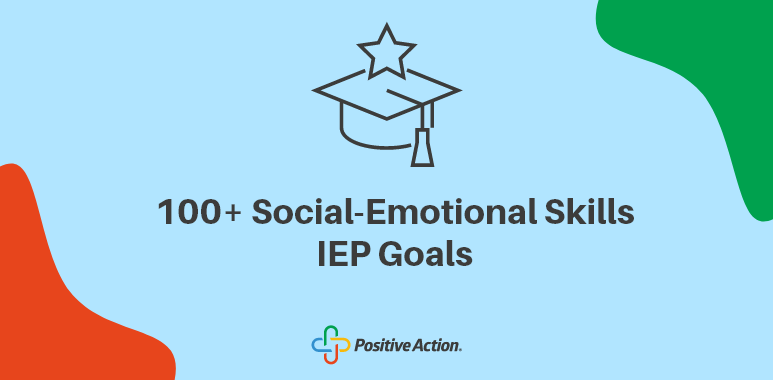
Social-Emotional Learning (SEL) Standards in All 50 States
Social-emotional learning works. As more states adopt the SEL as a regular part of student learning, the need for standards increases.
What are Social Emotional Learning Standards?
Educators, counselors, and teachers have specific standards they must meet for traditional, core instruction. The U.S. Department of Education defines standards as “set goals for what students should know and be able to do while learning academic content.”
In a sense, social-emotional learning standards are similar. They provide a shared language with which educators and politicians can discuss what students should be learning from their SEL curriculum.
Standards also help determine developmentally, grade-appropriate goals for students and teachers to work toward.
Social-emotional learning standards provide a “continuum of development across 5 SEL competencies: Self-Awareness, Self-Management, Social Awareness, Relationship Skills, and Responsible Decision-Making,” according to the Ohio Department of Education.
Standards List for all 50 States
Each state determines the standards for social-emotional learning on their own. We’ve provided links to each state that has criteria below.
Every state with SEL common core standards presents them differently. Take the time to read through your state’s educational website. They usually outline their goals, philosophy, and educational requirements for students as they progress through school.
- Alabama: Link
- Alaska: -
- Arizona: -
- Arkansas: -
- California: Link
- Colorado: Link
- Connecticut: Link
- Delaware: Link
- Florida: -
- Georgia: Link
- Hawaii: -
- Idaho: Link
- Illinois: Link
- Indiana: Link
- Iowa: -
- Kansas: Link
- Kentucky: -
- Louisiana: -
- Maine: Link
- Maryland: Link
- Massachusetts: Link | Link
- Michigan: Link
- Minnesota: -
- Mississippi: -
- Missouri: Link
- Montana: -
- Nebraska: -
- Nevada: Link
- New Hampshire: Link
- New Jersey: Link
- New Mexico: -
- New York: Link
- North Carolina: -
- North Dakota: Link
- Ohio: Link
- Oklahoma: -
- Oregon: Link
- Pennsylvania: Link
- Rhode Island: Link
- South Carolina: -
- South Dakota: -
- Tennessee: Link
- Texas: -
- Utah: -
- Vermont: Link
- Virginia: -
- Washington: Link
- West Virginia: Link
- Wisconsin: Link
- Wyoming: -
How Many States have Social Emotional Standards?
Not all states have determined their SEL standards. Only 29 states have provided these guidelines to their educators and teachers.
The lack of specific guidelines does not mean that the state education board does not encourage social, emotional learning. It only means that they have not codified the level of achievement to which students should aspire.
Which States Have SEL Standards?
For your convenience, we’ve listed each state that has provided SEL learning standards by region.
The Western States
- California
- Colorado
- Idaho
- Nevada
- Oregon
- Washington
The Mid-Western States
- Illinois
- Indiana
- Kansas
- Michigan
- Missouri
- North Dakota
- Ohio
- Wisconsin
The Southern States
- Alabama
- Delaware
- Georgia
- Maryland
- Tennessee
- West Virginia
The North-Eastern States
- Connecticut
- Massachusetts
- Maine
- New Hampshire
- New Jersey
- New York
- Pennsylvania
- Rhode Island
- Vermont
Positive Action Supports SEL Standards
Through social-emotional education, students gain confidence, emotional intelligence, and social skills, which will influence them for the rest of their lives. And those benefits spread from the schools into families and communities.
Elementary schools that have implemented Positive Action have seen:
- A 62% reduction in violence
- 51% fewer bullying incidents
- Absenteeism reduced by 28%
- A 73% shrinkage in suspensions
- 85% fewer disciplinary referrals
The use of prohibited substances lowered and achievement in math, reading, and physical health improved in Positive Action schools, too.
The Positive Action SEL program teaches core academic lessons alongside its SEL objectives. Independent researchers have found a high level of alignment with English Language Arts standards for K-12 grades. It also aligns with Early Childhood Education learning standards for Pre-K.
For more information on how each Positive Action lesson aligns with seven academic standards on average, and what that means in your state, click here.
If your state has not standardized social-emotional learning requirements, speak to your leadership, and contact your representatives. Positive Action qualifies for federal funding under the Every Student Succeeds Act (ESSA), and there may be opportunities for state funding as well.
For more information about our program, feel free to reach out via chat, email, or call us at (800) 345-2974.







